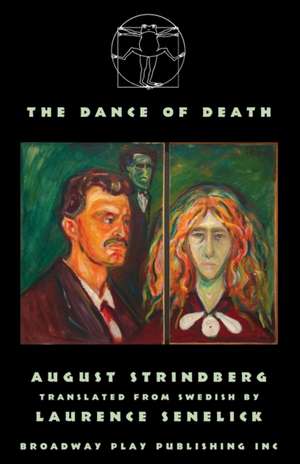The Dance of Death
Autor August Strindberg Traducere de Laurence Senelicken Limba Engleză Paperback – 7 dec 2020
Strindberg, The Quarantine Officer's Second Tale, 1902
"THE DANCE OF DEATH certainly exceeds the surface naturalism stressed by earlier critics. Being the fruit of Strindberg's harrowing personal suffering, the play expresses in many surrealistic ways the state of mind of persons engaged in elemental conflicts."
Sister Corona Sharp
"THE DANCE OF DEATH is a study of the horror of life's spiritual isolation-the loneliness that unhappy intimacy with another only accentuates."
Charles Isherwood
"In the case of Strindberg, the tragic strain does not exclude the comic, that the two in fact coalesce, become as it were one, in the manner of the modern as distinguished from the classical drama."
Alrik Gustafson
Preț: 101.92 lei
Nou
Puncte Express: 153
Preț estimativ în valută:
19.52€ • 20.11$ • 16.35£
19.52€ • 20.11$ • 16.35£
Carte tipărită la comandă
Livrare economică 24 februarie-10 martie
Preluare comenzi: 021 569.72.76
Specificații
ISBN-13: 9780881458923
ISBN-10: 0881458929
Pagini: 152
Dimensiuni: 140 x 216 x 8 mm
Greutate: 0.2 kg
Editura: Broadway Play Publishing
ISBN-10: 0881458929
Pagini: 152
Dimensiuni: 140 x 216 x 8 mm
Greutate: 0.2 kg
Editura: Broadway Play Publishing
Notă biografică
Johan August Strindberg was a Swedish dramatist, writer, poet, essayist, and painter who lived from 22 January 1849 to 14 May 1912. The Red Room (1879), written by him, has usually been referred to be the first modern Swedish book. He is regarded as the "father" of contemporary Swedish writing. With its attempt to portray the unconscious processes by doing away with traditional theatrical time and space, Zola's A Dream Play (1902) had a key influence on both expressionism and surrealism. He assisted in running the Intimate Theatre, which produced his chamber pieces and was fashioned after Max Reinhardt's Kammerspielhaus (such as The Ghost Sonata). He interacted with a wide range of artists from Germany, Poland, and Scandinavia. He focused on Frida Uhl, who was just twenty-three years Strindberg's junior. They tied the knot in 1893. The couple split up less than a year after the birth of their daughter Kerstin, however their marriage was not legally dissolved until 1897. Shortly after one of Strindberg's plays had its American premiere, he passed away. The Father, a translation by Edith Gardener Shearn Oland and her husband Warner Oland, debuted on April 9, 1912, at the Berkeley Theatre in New York.
